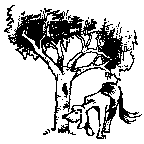
This section reviews Macintosh-based World Wide Web browsers.
The applications described here are some of the best windows to the Internet. They are the sorts of applications that have changed the Internet into a "world wide web." In a nutshell, these applications do only three things. Send requests for information, wait for the replies, and interpret any returned results.
What makes them truly powerful applications is their ability to understand and interpret many different Internet protocols. At the very least, they can "speak" gopher, FTP, HTTP, and NNTP. Their ability to communicate on all these levels has reduced your need to own and use many different Internet programs. Instead, you can use one program for most of your Internet needs. Since these programs and others like them, can understand many different "languages" and tie together a "host" of different Internet servers, Internet end-users can "weave" their way around divergent Internet server applications with one interface. Thus, the programs described here are what have made turned the Internet into a "world wide web."
In brief, the browser supported by AOL and eWorld is the easiest to get up an running. MacWeb represents a browser adhering to standards. TCP/Connect II is much more than a WWW browser. Mosaic is important because it represents the beginnings of the World Wide Web. Netscape is the most full-featured browser, but as it grows, it becomes a bigger and bigger application demanding more and more computing resources to use effectively.
This page was first published on September 26, 1995. Feel free to send comments.
Summary
The table below summarizes the features of each of the browsers reviewed here.
AOL
eWorld
MacWeb
Mosaic
Netscape
TCP/Connect II
Annotation
n
n
n
y
n
n
Menu editing
n
n
n
y
n
n
Tables
n
n
n
s
y
n
Font preferences
n
n
y
y
s
n
Hierarchical hotlists
n
n
n
n
y
n
Enhanced HTML
n
n
n
n
y
s
Balloon Help
n
n
n
n
n
n
AppleScriptable
y
y
n
s
y
y
Mail document
n
n
n
n
y
n
Copy URL from window
n
n
y
n
y
n
Search this book |
Previous | Table of contents | Next